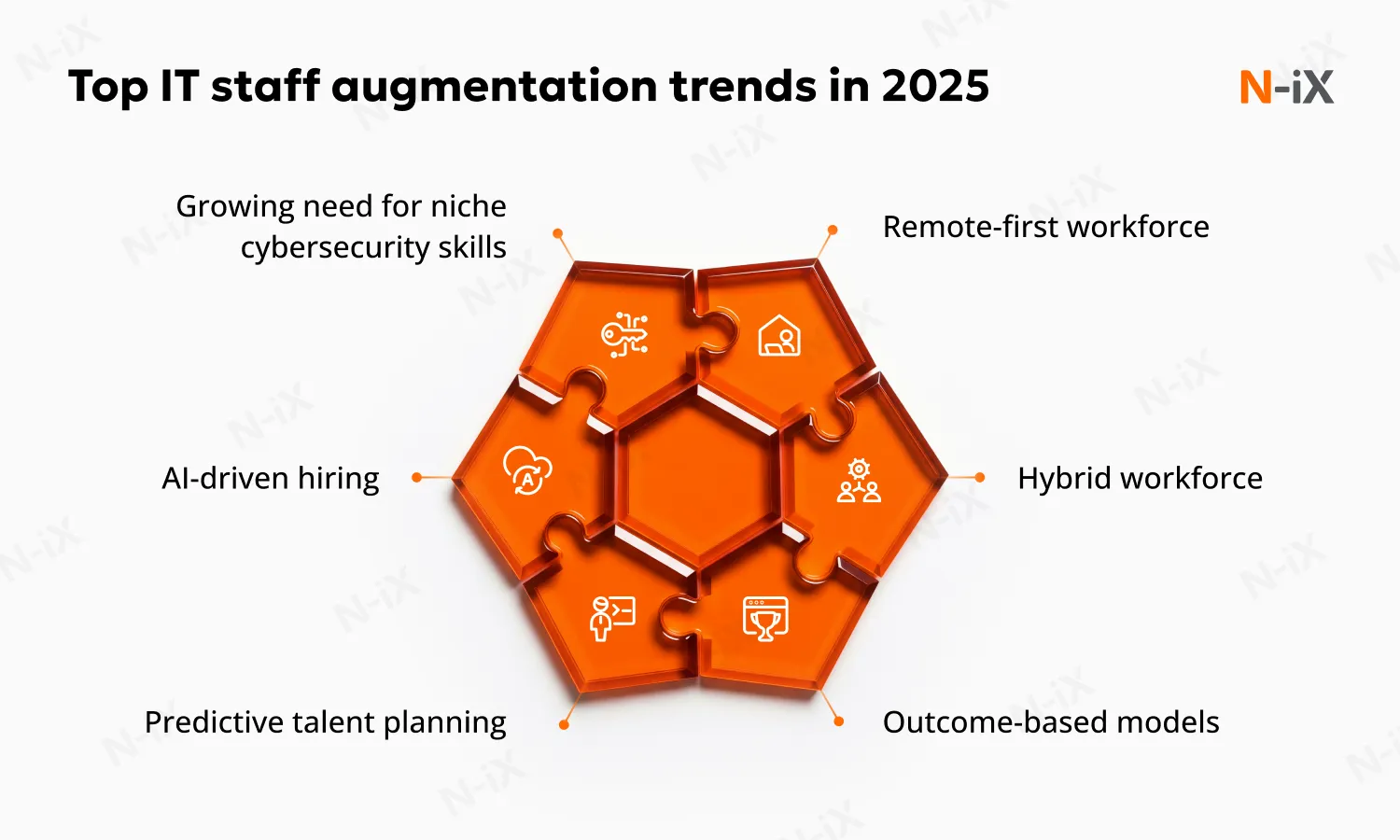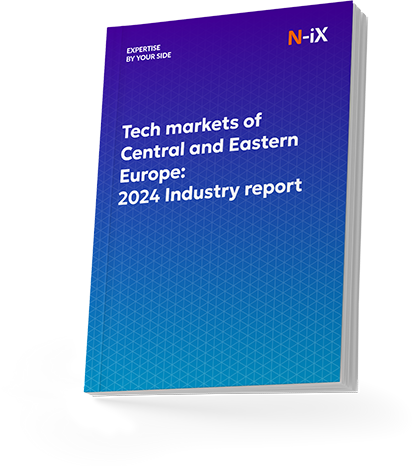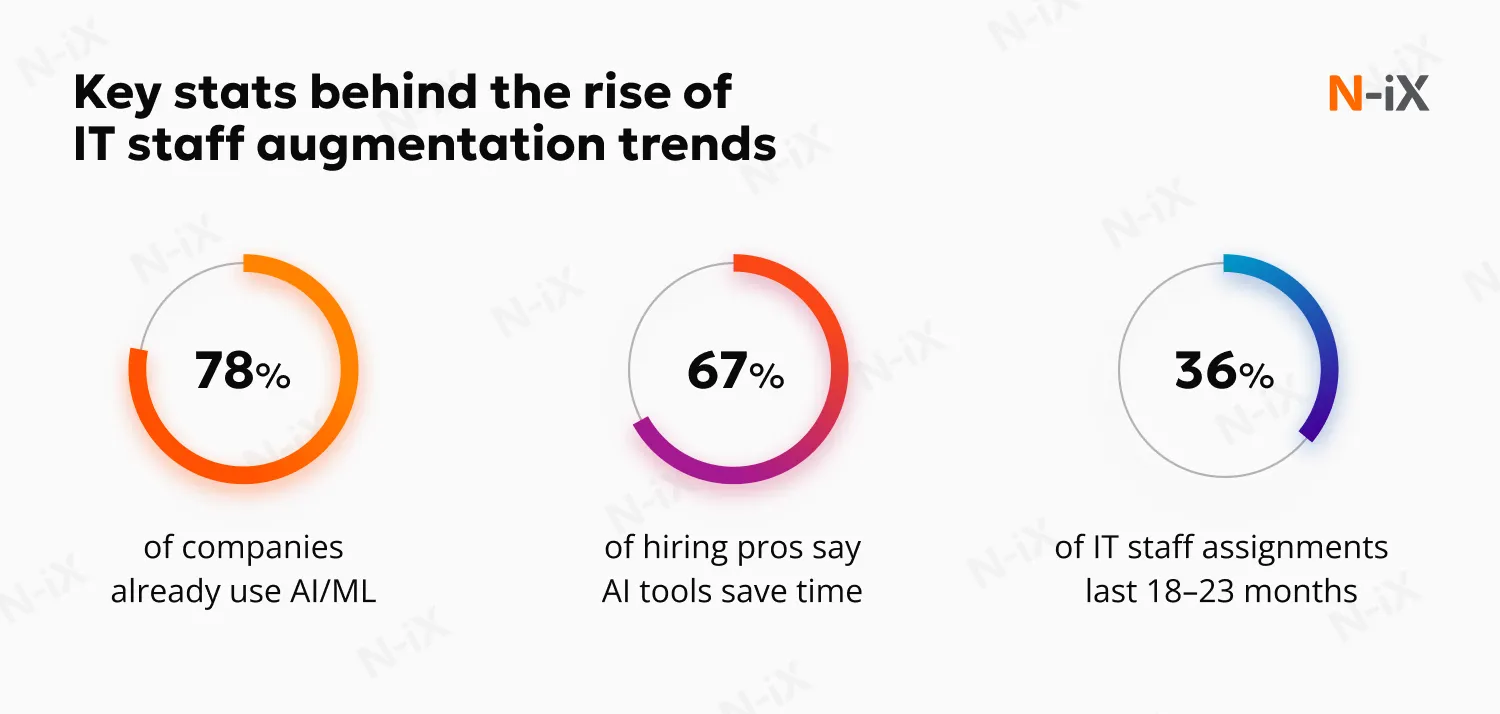The global technology sector is grappling with a historic skills crisis. As companies race to integrate Artificial Intelligence, upgrade legacy infrastructure, and enhance cybersecurity, the demand for top-tier tech talent has outpaced supply. Traditional hiring models are proving insufficient for keeping up with fast-changing business demands.
In this context, IT staff augmentation has emerged as a vital strategy. Instead of going through lengthy full-time hiring processes, organizations are engaging external experts who can join internal teams and contribute from day one. This approach gives companies the flexibility to scale fast, access rare technical skills, and maintain control over project execution, without the overhead of permanent employment. Recent IT staff augmentation trends highlight the growing preference for flexible, skills-first talent strategies as companies navigate rapid digital transformation and global competition for talent.
According to Verified Market Research, the global IT staff augmentation market was valued at $299.3B in 2023 and is expected to surge to $857.2B by 2031, growing at a compound annual growth rate (CAGR) of 13.2% over the period. The growth reflects a structural transformation in how companies build and manage tech teams in a post-pandemic, AI-powered world.
What is IT staff augmentation, and why is it critical in 2026?
IT staff augmentation is a workforce strategy that allows companies to temporarily extend their development capacity by integrating external IT professionals, such as software engineers, QA testers, DevOps engineers, and data scientists, into their internal teams. These professionals are typically sourced from specialized vendors and work under the client's direction, processes, and tools.
Unlike full outsourcing or managed services, where responsibility for outcomes shifts to the vendor, staff augmentation keeps control of product and delivery firmly in-house. This model is ideal for businesses that need to:
- Fill critical skill gaps quickly;
- Scale up teams for a specific phase of a project;
- Maintain quality control and IP ownership.
Rather than building large, fixed teams that may become outdated or underutilized, organizations are increasingly building "elastic" teams that can flex with demand by mixing internal staff with external specialists brought in on demand.

Read more: Top IT staff augmentation challenges solved
Get a complete overview of Central and Eastern European tech markets!


Success!

Why IT staff augmentation is gaining momentum
1. Talent shortages are widespread and intensifying
According to the 2024 ManpowerGroup Talent Shortage Survey, 74% of employers globally report difficulty finding the talent they need, a 17-year high and a sign that traditional hiring channels fail to deliver.
In technology specifically, this shortage is acute. With emerging fields like AI, blockchain, and cybersecurity evolving rapidly, the talent pool is not growing fast enough to meet enterprise needs.
2. Time-to-hire is too slow for agile business demands
Even when suitable candidates exist, hiring them takes time. According to HeroHunt.ai, the average time to fill a technical position is 52 days. Ashby HQ places the average for specialized tech roles even higher, at 88 days.
In fast-paced tech environments, waiting nearly three months to staff a project-critical role simply is not viable. IT staff augmentation solves this by providing pre-vetted candidates within days, not months.
3. Companies are prioritizing skills over traditional experience
The rise of generative AI has reshaped hiring priorities. According to Microsoft's Work Trend Index 2024, 71% of business leaders say they would prefer a less experienced candidate skilled in AI tools over a more experienced candidate who is not.
As the technical landscape evolves, skills have become more important than titles or tenure. This shift aligns perfectly with staff augmentation, where businesses hire for specific capabilities, not long-term roles.
4. Strategic flexibility is no longer optional
The traditional hiring model is ill-suited to project-based, rapidly evolving work. By contrast, staff augmentation allows businesses to add or reduce talent based on real-time needs, without the financial and legal burden of permanent employment contracts.
With $81.87B expected to be spent on staff augmentation globally by 2025, it is clear that organizations see this model as a long-term talent strategy, not a short-term fix.
Key trends shaping IT staff augmentation in 2026
As digital transformation continues to accelerate across industries, the way businesses engage external talent is evolving just as rapidly. Staff augmentation is no longer just a flexible staffing model; it is now a strategic capability. Below are the ten most significant IT staff augmentation trends in 2026, grounded in data and observed across high-performing organizations.
1. AI-powered talent matching and recruitment automation
AI has become a cornerstone of modern hiring. According to DemandSage, over 65% of recruiters already use AI tools to support talent acquisition. From resume screening and skills matching to interview scheduling, AI dramatically speeds up the recruitment process.
Furthermore, 67% of hiring professionals report that AI tools save them significant time. In the context of staff augmentation, this translates into shorter time-to-fill for even the most niche roles, often days instead of weeks.
AI-based recruitment platforms are also improving accuracy in talent placement by analyzing candidate fit based on historical project data, communication style, and domain knowledge, reducing the risk of mis-hires.
2. Surge in niche skill demand (AI/ML, DevSecOps, Quantum, RegTech)
The demand for highly specific and advanced skills is surging. Technologies such as AI/ML, cloud-native development, DevSecOps, quantum computing, and data privacy engineering require specialized knowledge that few organizations have in-house.
According to Statista, 78% of global companies are using AI/ML solutions, up significantly from previous years. With the rise of tools like OpenAI's Codex or Google's Gemini, the need for AI ethics specialists, prompt engineers, and MLOps architects is growing exponentially.
Recent IT staff augmentation trends reveal that enterprises are increasingly filling these gaps through targeted partnerships rather than full-time hires, enabling faster innovation without long-term overhead. Meanwhile, fields like quantum computing and RegTech are emerging faster than talent can be trained. Staff augmentation allows businesses to experiment in these areas without making long-term hiring commitments.
3. Remote-first and hybrid workforce models
Remote work is now standard, especially in tech. In its 2024 Technology Salary Guide, Robert Half notes that 43% of tech job postings now offer remote or hybrid options, a figure expected to rise. This shift is enabling organizations to tap into a truly global talent pool. Staff augmentation vendors are helping businesses build distributed teams across Eastern Europe, LATAM, and Southeast Asia, making it easier to find the right specialist regardless of geography. Remote-ready staff augmentation not only widens talent access-it also supports 24/7 development cycles, improved disaster resilience, and greater cost efficiency.
4. Cybersecurity staffing in response to growing threats
The cybersecurity skills gap remains one of the most pressing concerns for tech leaders. According to the ISC² 2024 Cybersecurity Workforce Study, 58% of organizations report that cybersecurity skills shortages pose a significant risk to their operations. Staff augmentation allows companies to quickly onboard cybersecurity professionals, such as DevSecOps engineers, ethical hackers, threat analysts, and privacy engineers, without waiting months to fill permanent roles.
Vendors offering certified talent with ISO 27001, SOC 2, or CISSP credentials are becoming increasingly vital partners in ensuring enterprise resilience.
5. Outcome-based engagement and delivery contracts
One of the most notable IT staff augmentation trends is the move away from time-based billing toward outcome-based engagement models. Instead of paying by the hour, businesses are negotiating contracts based on defined deliverables, such as feature completions, defect thresholds, or performance SLAs.
This model aligns external incentives with internal business goals and reduces the risk of runaway costs or misaligned priorities. It's especially effective for use cases like cloud migrations, AI model rollouts, and system modernization, where clear success metrics can be established.
6. Rise of skills-based (not role-based) hiring architectures
Modern enterprises are moving away from traditional job titles and toward skills-first workforce planning. Instead of recruiting a "software engineer," organizations are now looking for professionals with specific skills, like "Python with TensorFlow for predictive analytics," or "React developer with accessibility compliance experience."
This approach reduces overlap and improves the precision of hiring decisions. Many companies are now integrating internal skills matrices and vendor-side competency tagging systems to make team assembly faster and more transparent.
7. Integration of augmented teams into internal workflows
Gone are the days when augmented staff worked separately from internal teams. In 2025, high-performing companies treat external professionals as fully embedded contributors.
This means providing access to internal systems, including contractors in sprint planning and retrospectives, and aligning them with internal OKRs (Objectives and Key Results). With the right onboarding processes, augmented staff can become productive in a matter of days. Tools like Slack, Jira, Confluence, GitHub, and Azure DevOps make seamless integration easier, supporting hybrid delivery models where internal and external developers work side by side.
8. Predictive talent planning and workforce analytics
Staffing is becoming smarter and more proactive, thanks to predictive analytics. By analyzing historical project data, current backlog complexity, and industry hiring trends, companies can forecast skill needs three to six months in advance.
This forward-looking model allows organizations to pre-qualify augmentation candidates and lock in talent before demand peaks, which is especially important in high-demand areas like cloud FinOps, blockchain infrastructure, or AI model governance. Predictive talent planning reduces budget volatility and minimizes last-minute scrambling for scarce roles.
9. Nearshore and offshore expansion strategies
To meet the need for both cost efficiency and high-quality talent, companies are increasingly turning to nearshore and offshore staff augmentation models. LATAM, Eastern Europe, and Southeast Asia are among the top regions for sourcing technical talent in 2025.
This strategy allows for better timezone overlap compared to offshoring alone, while still offering significant savings over onshore hiring. Nearshore partners often bring strong English proficiency, cultural compatibility, and domain knowledge, especially in fintech, ecommerce, and healthtech. By combining multiple regions, companies can build "follow-the-sun" teams that maintain 24/7 development cycles and faster incident response.
10. Ecosystem partnerships over generic staffing vendors
Rather than relying on generalist staffing agencies, companies are building long-term ecosystem partnerships with niche augmentation vendors. These specialized firms focus on a particular tech domain (e.g., AI/ML, blockchain, automotive embedded software) or industry verticals (e.g., healthcare, banking, manufacturing).
Specialist partners offer pre-vetted talent, reusable solution components, and domain-specific best practices, drastically reducing onboarding time and increasing project success rates. This shift from transactional sourcing to strategic collaboration reflects the growing role of staff augmentation in delivering long-term business value, not just short-term capacity.

You may also be interested in reading more about platform engineering trends
Future predictions for IT staff augmentation trends
While 2025 marks a pivotal year for the growth and strategic repositioning of IT staff augmentation, its transformation is far from complete. As emerging technologies mature, regulatory complexity increases, and AI further embeds itself into business processes, the very nature of IT workforce models will continue to evolve. Below are five forward-looking predictions that outline IT staff augmentation trends through the rest of the decade.
1. Blockchain will redefine credential verification
In an industry where speed-to-hire and trust are critical, blockchain is poised to solve a key challenge: verifying skills, certifications, and experience across borders. Traditional reference checks and certifications often take weeks to confirm and are susceptible to fraud or misrepresentation.
Blockchain-based talent platforms that are already in early-stage use by startups like Velocity Network, create secure, tamper-proof records of an individual's qualifications, project history, and endorsements. By 2027, we expect many staff augmentation vendors to use blockchain-enabled verification systems to accelerate background checks, reduce onboarding friction, and ensure talent authenticity. This will be particularly important in regulated industries like finance, healthcare, and government IT.
2. Sovereign clouds will drive localized augmentation pools
As more countries enforce data residency regulations (e.g., GDPR in the EU, CCPA in California, India's DPDP Act), cloud providers are rolling out sovereign cloud offerings, where infrastructure, data access, and talent remain within national borders.
This shift will directly impact staff augmentation strategies. Companies operating in regulated sectors will need to hire developers, architects, and security experts from within specific geographies to comply with local laws, even for short-term projects.
Staff augmentation partners will respond by building geo-specific talent pools with verified local credentials. We're already seeing this trend emerge in regions like the EU and the Middle East, where cloud sovereignty is tightly linked to national digital strategy.
3. Hybrid AI-human delivery models will become standard
Generative AI is not replacing developers; it's becoming their co-pilot. In the near future, augmented teams will comprise a blend of human talent and AI agents, working in tandem to deliver faster, more scalable solutions. For example:
- Developers will use GitHub Copilot or Amazon CodeWhisperer to write and refactor code faster;
- Test engineers will pair with AI-based test generation and execution tools;
- DevOps professionals will deploy pipelines that auto-tune themselves using predictive analytics.
Augmented staff will be selected not just for their technical skills, but for their ability to orchestrate AI tools effectively, bringing a new dimension to what "expertise" means. This shift reflects broader IT staff augmentation trends where human-AI collaboration becomes the cornerstone of technical proficiency. This trend reinforces the importance of continuous upskilling within augmented teams, and vendors who invest in GenAI fluency across their talent pool will gain a competitive edge.
4. AI will drive smart, autonomous talent marketplaces
Today's staff augmentation is often driven by human recruiters. Tomorrow, AI-driven talent marketplaces will match engineers and companies in real time based on project scope, skills, availability, and past performance.
Using large-scale analytics and machine learning models, these platforms will recommend the optimal team composition for a project, factoring in not just skills but working styles, timezone alignment, and collaboration history. Companies will rely on these intelligent systems to:
- Auto-assemble agile squads from internal and external pools;
- Predictively staff roadmap initiatives months in advance;
- Optimize project staffing based on performance and velocity metrics.
This will shift staff augmentation from a reactive hiring process to a strategic resourcing engine embedded in enterprise planning.
5. Compliance-driven augmentation will expand across industries
As global compliance pressures increase, especially around data privacy, AI ethics, ESG reporting, and software accessibility, companies will increasingly require compliance-aware technical staff. That means not just engineers who can code, but professionals who understand and embed regulatory standards like:
- GDPR/CCPA for data privacy;
- WCAG 2.2 for accessibility;
- ISO/IEC 27001 for security;
- EU AI Act and U.S. AI governance frameworks.
Staff augmentation providers will respond by developing specialized compliance-ready talent pools and training programs. Already, firms in finance, healthcare, and public sector IT are seeking professionals who bring a regulatory lens to technical delivery. By 2028, compliance-readiness will become a standard part of RFIs and vendor evaluation processes in staff augmentation engagements.
Looking ahead
Together, these predictions point to a more intelligent, regulated, and integrated future for IT staff augmentation. Companies that start preparing now by embedding AI into workforce planning, forming geo-compliant partnerships, and upskilling for GenAI orchestration will be positioned to thrive in this new landscape.
Evolving IT staff augmentation trends indicate that the model is shifting from a stopgap solution to a long-term strategy for competitive advantage. Staff augmentation will no longer be a reactive tool to cover temporary gaps. It will be a core competency for delivering innovation, resilience, and speed at scale.
IT staff augmentation: Key steps
Successfully adopting staff augmentation goes beyond choosing a vendor-it requires strategic planning, process alignment, and ongoing performance management. This step-by-step guide will help organizations structure their augmentation programs to deliver consistent results, reduce operational risks, and maximize ROI. As IT staff augmentation trends evolve, strategic implementation becomes critical to unlocking the full value of flexible talent models.
Step 1: Identify skill gaps
Before engaging any external talent, conduct a comprehensive skills gap analysis across your tech teams and project roadmap. Ask:
- Which projects are at risk due to capacity or skill gaps?
- What technologies are we lacking internally (e.g., Kubernetes, React Native, Azure DevOps)?
- Which roles require long-term in-house expertise vs. short-term external support?
Tools like internal skills matrices, backlog audits, and velocity tracking can help surface critical gaps. Be as specific as possible-augmenting for "a DevOps engineer" is far less effective than augmenting for "a Terraform-proficient DevOps engineer with AWS and GitHub Actions experience."
Step 2: Choose the right engagement model
There is no one-size-fits-all in staff augmentation. Depending on project scope, budget, and delivery needs, you can choose between:
- Time and materials (T&M): Best for evolving requirements or flexible scopes;
- Dedicated teams / ODCs: Ideal for long-term, full-team integration with stable workloads;
- Outcome-based engagements: Great for well-defined deliverables and milestone tracking.
Many companies combine models-for example, using outcome-based contracts for critical paths and T&M for supporting roles.
Step 3: Evaluate and select the right vendor
Not all staff augmentation vendors are equal. The best partners are not just recruiters-they are delivery-focused, domain-aware, and compliance-ready. When evaluating vendors, consider:
- Domain expertise: Do they specialize in your tech stack or industry?
- Talent network depth: Do they have access to mid- and senior-level engineers across time zones?
- Compliance posture: Are they SOC 2, ISO 27001, HIPAA, or GDPR certified?
- Track record: Can they share success stories or client references?
- Speed to deploy: How quickly can they deliver CVs and onboard talent?
Request sample CVs, interview candidates, and run pilot engagements before committing to multi-month scopes.
Step 4: Onboard external talent efficiently
Effective onboarding is one of the most overlooked steps in staff augmentation. Whether you're onboarding one engineer or a 10-person squad, the process should:
- Mirror the onboarding journey for internal hires;
- Include access to all necessary tools (GitHub, Slack, Jira, CI/CD);
- Provide documentation: system architecture, coding standards, DevOps guidelines, etc.;
- Clarify communication channels, escalation paths, and delivery expectations.
Assign an internal buddy or engineering manager to each augmented team for smoother integration and knowledge sharing.
Step 5: Integrate, monitor, and optimize
Once augmented talent is in place, focus on performance visibility and continuous optimization. To ensure high impact:
- Include external staff in daily stand-ups, sprint reviews, and planning meetings;
- Track KPIs including story points completed, lead time for changes, escaped defect rate, and code review participation;
- Use structured performance reviews at the end of each sprint or milestone.
Don't forget: Plan for roll-offs at least 2-4 weeks in advance to allow for knowledge handover and minimize disruption.
Bonus step: Document and reuse what works
After a successful engagement, create reusable documentation by capturing vendor scorecards, performance benchmarks, team integration playbooks, and knowledge transfer processes to replicate success in future projects. These assets reduce ramp-up time for future augmentation efforts and contribute to a sustainable talent strategy. With a structured approach, staff augmentation becomes a repeatable, value-generating function, not a last-minute stopgap. Organizations that follow this process gain not just access to talent, but strategic control over how that talent drives business results.
Why choose N‑iX for your IT staff augmentation
Amid fast-evolving IT staff augmentation trends, businesses are prioritizing partners who can offer both scalability and long-term value, qualities that define the N‑iX approach. N‑iX stands out as a trusted partner thanks to its combination of deep technical expertise, proven processes, and strong global footprint:
1. Extensive talent pool & fast ramp-up
Our global network of 2,400+ dedicated tech specialists across Europe, Latin America, and Asia is supported by 70+ experienced recruiters who maintain a 270K+ internal candidate database and access to an external pool of 8.8M talent across 25 countries, enabling us to identify and onboard top talent within 3-4 weeks and avoid the burden of prolonged hiring cycles.
2. Proven technical & domain expertise
We maintain a strong presence across finance, healthcare, retail, telecom, energy, logistics, agritech, and automotive industries, providing on-demand access to specialists, including 400+ cloud experts, 275+ QA professionals, 200+ data & AI specialists, 60+ DevOps engineers, and 20+ cybersecurity consultants and RPA experts across key domains. These experts are skilled across Java, .NET, Python, JavaScript, Scala, mobile (iOS/Android), and other modern stacks.
3. Seamless integration across time zones & cultures
Our delivery hubs in Poland, Ukraine, Bulgaria, Colombia, India, and other locations offer strategic timezone overlap and cultural alignment, with our Latin American center in Medellin, Colombia specifically supporting North American clients through smoother nearshore collaboration.
4. Cost efficiency & speed gains
Clients gain 1.5× faster development speed, reducing time-to-market, achieve 2-2.5× lower management overhead than typical industry averages through streamlined processes, and experience a 20-60% reduction in waste with 20%+ overall cost savings as processes are optimized and agile approaches are enforced. N‑iX operates under ISO 27001, SOC 2, PCI DSS, GDPR, and other international security and compliance standards, with every engagement including clear IP ownership, successful data privacy practices, and secure remote working protocols.
6. Flexible engagement models
N‑iX offers three cooperation models tailored to project needs:
- Staff Augmentation: experts join your teams directly under your management;
- Managed Teams: end-to-end delivery, managed by N‑iX with shared oversight;
- Custom Solutions: full-cycle development (from roadmap design to release) with outcome-based commitments.
This allows you to match budget and control preferences, whether you want direct oversight or a fully-managed service.
7. Global recognition
N‑iX is featured among the Global Outsourcing 100 by IAOP, mentioned in CRN's Solution Provider 500, and more international rankings. Choosing N‑iX means leveraging a trusted injection of talent, delivery expertise, and agile process muscle, enabling you to scale smartly, move faster, and stay secure.
Have a question?
Speak to an expert





